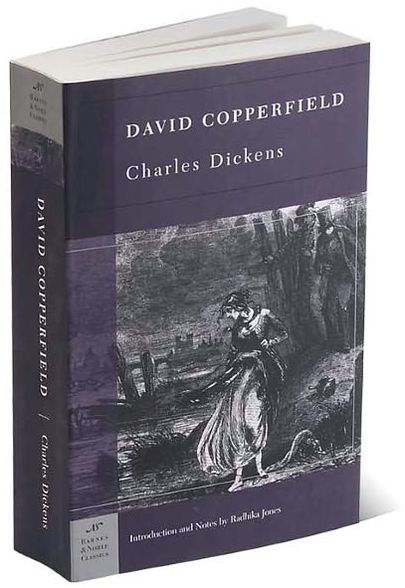- New introductions commissioned from today's top writers and scholars
- Biographies of the authors
- Chronologies of contemporary historical, biographical, and cultural events
- Footnotes and endnotes
- Selective discussions of imitations, parodies, poems, books, plays, paintings, operas, statuary, and films inspired by the work
- Comments by other famous authors
- Study questions to challenge the reader's viewpoints and expectations
- Bibliographies for further reading
- Indices & Glossaries, when appropriate
Dickens’s favorite of all his novels, David Copperfield is the story of a boy who loses both parents at an early age, and who escapes the torture of working for his pitiless stepfather to make something of himself and, with any luck, find true happiness.
David Copperfield features an unforgettable gallery of characters, including David’s cruel stepfather Mr. Murdstone, the unctuous Uriah Heep, the amiable Mr. Micawber, whom Dickens based on his father, and Dora Spenglow, whom David marries and calls his “child-wife.” Written in the first person, David Copperfield is perhaps the most autobiographical of Dickens’s fictions. This new edition includes commentaries, discussion questions, and Phiz’s original illustrations.
Features the original illustrations by Phiz.
Radhika Jones is the managing editor of Grand Street magazine, a freelance writer, and a Ph.D. candidate in English and Comparative Literature at Columbia University. Jones also wrote the introduction and notes for the Barnes & Noble Classics edition of Charles Dickens’s Great Expectations.
- New introductions commissioned from today's top writers and scholars
- Biographies of the authors
- Chronologies of contemporary historical, biographical, and cultural events
- Footnotes and endnotes
- Selective discussions of imitations, parodies, poems, books, plays, paintings, operas, statuary, and films inspired by the work
- Comments by other famous authors
- Study questions to challenge the reader's viewpoints and expectations
- Bibliographies for further reading
- Indices & Glossaries, when appropriate
Dickens’s favorite of all his novels, David Copperfield is the story of a boy who loses both parents at an early age, and who escapes the torture of working for his pitiless stepfather to make something of himself and, with any luck, find true happiness.
David Copperfield features an unforgettable gallery of characters, including David’s cruel stepfather Mr. Murdstone, the unctuous Uriah Heep, the amiable Mr. Micawber, whom Dickens based on his father, and Dora Spenglow, whom David marries and calls his “child-wife.” Written in the first person, David Copperfield is perhaps the most autobiographical of Dickens’s fictions. This new edition includes commentaries, discussion questions, and Phiz’s original illustrations.
Features the original illustrations by Phiz.
Radhika Jones is the managing editor of Grand Street magazine, a freelance writer, and a Ph.D. candidate in English and Comparative Literature at Columbia University. Jones also wrote the introduction and notes for the Barnes & Noble Classics edition of Charles Dickens’s Great Expectations.

David Copperfield (Barnes & Noble Classics Series)
768
David Copperfield (Barnes & Noble Classics Series)
768
Product Details
| ISBN-13: | 9781593080631 |
|---|---|
| Publisher: | Barnes & Noble |
| Publication date: | 12/01/2003 |
| Series: | Barnes & Noble Classics Series |
| Pages: | 768 |
| Sales rank: | 14,589 |
| Product dimensions: | 5.25(w) x 8.00(h) x 1.54(d) |
About the Author
Customer Reviews
Explore More Items
At first glance, Three Lives seems to be three straightforward portraits of women living in the early twentieth century. “The Good Anna” describes an exacting German house servant;
Dickens creates the Victorian industrial city of Coketown, in northern England, and its unforgettable citizens, such as the
Set in an industrial city in Northern England during the Victorian era, Thomas Gradgrind, a wealthy and retired man, devotes his life to the rationalist philosophy, and raises his children, Louisa



